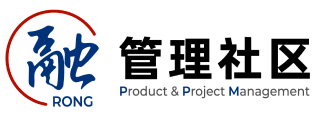我说CMMI2.0之产品集成
 783 2023-07-12
783 2023-07-12
我们非常重视原创文章,为尊重知识产权并避免潜在的版权问题,我们在此提供文章的摘要供您初步了解。如果您想要查阅更为详尽的内容,访问作者的公众号页面获取完整文章。

Product Integration (PI) Summary
Product Integration (PI) is the process of assembling different components into a larger part or a complete deliverable product. This Process Area (PA) includes activities related to the development of an integration strategy, preparation for integration, the integration process itself, post-integration verification and validation, and delivery.
Practice List Summary
- PI 1.1: Solutions are assembled and delivered to the customer, forming a deliverable product from different components.
- PI 2.1: An integration strategy is created, maintained, and followed, which covers integration frequency, methods, and order.
- PI 2.2: An integration environment is established and updated, including tools, hardware, simulators, and testing equipment.
- PI 2.3: Procedures and criteria for integrating solutions and components are developed and updated.
- PI 2.4: Prior to assembly, each component is confirmed to have been properly identified and to operate as per its requirements and design.
- PI 2.5: Assembled components are evaluated to ensure they conform to the solution's requirements and design.
- PI 2.6: Solutions and components are assembled according to the integration strategy, with a strong recommendation for continuous integration and automation.
- PI 3.1: Throughout the solution's lifecycle, interface or connection descriptions are reviewed and updated for coverage, completeness, and consistency.
- PI 3.2: Before assembly, component interfaces or connections are confirmed to comply with their descriptions.
- PI 3.3: Assembled components are evaluated for interface or connection compatibility, ensuring compatibility across various aspects like software, hardware, browsers, and data.
Layman's Explanation
The PI practices involve assembling and delivering a solution to the customer, developing an updated integration strategy and environment, and ensuring all parts work together seamlessly. This includes checking component readiness, evaluating assembled parts, and managing interfaces or connections over the product's entire lifecycle. Continuous integration and automated platforms are highly recommended. Interface management is crucial and involves stakeholder needs, transforming those needs into customer requirements, and ensuring interface or connection requirements are identified, developed, and kept updated.
想要了解更多内容?

麦哲思科技(北京)有限公司总经理 敏捷性能合弄模型评估师 认证的Scrum Master 认证的大规模敏捷顾问SPC CMMI高成熟度主任评估师 COSMIC MPC,IAC 成员,中国分部主席


白皮书上线








